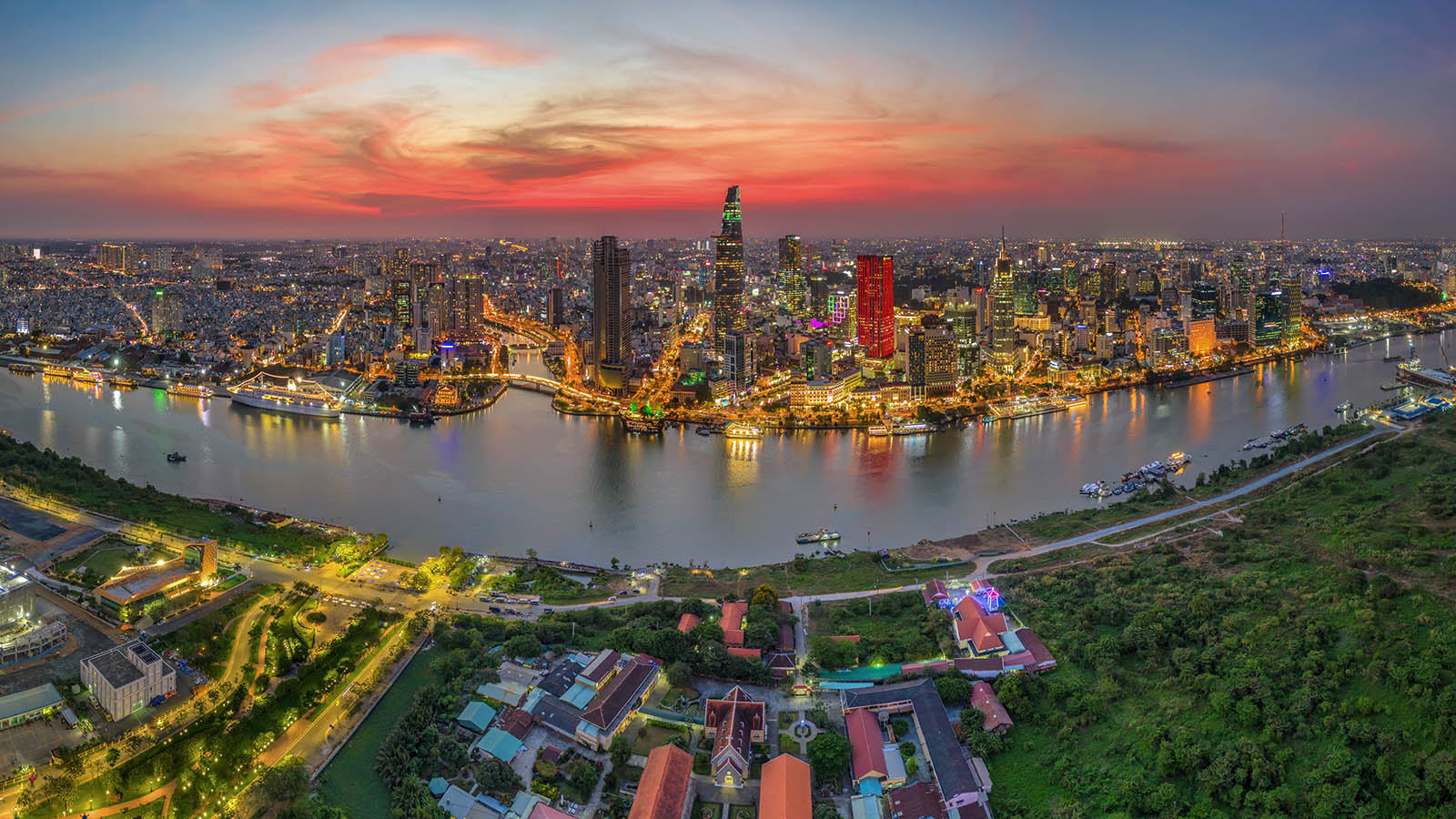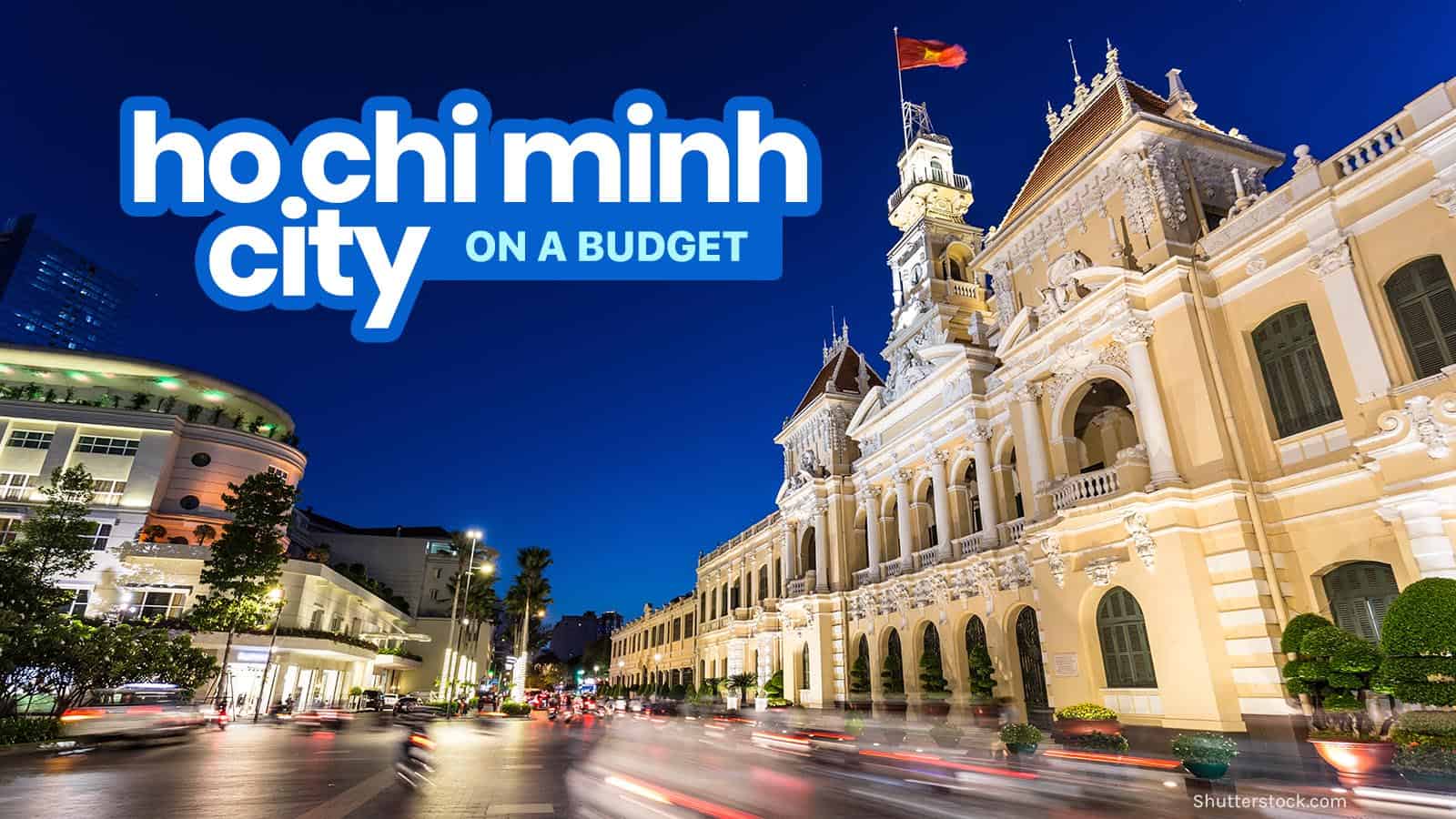
Ho Chi Minh City is a city that never sleeps; it’s a whirlwind of energy, sound, and flavor that assaults the senses in the most delightful way. A constant river of motorbikes flows through its streets, past ancient pagodas shrouded in incense smoke, elegant French colonial buildings, and gleaming modern skyscrapers. Known to locals and many travelers by its former name, Saigon, this southern Vietnamese metropolis is a city of dramatic contrasts, a place where history is not confined to museums but is etched into the very fabric of its boulevards and back alleys.
This guide will navigate you through the chaotic charm of Ho Chi Minh City, from its poignant history and must-see landmarks to its world-renowned culinary scene and practical tips for making the most of your visit.
A City Forged in History
Related Articles about Ho Chi Minh City: A Vibrant Travel Guide to Vietnam’s Southern Metropolis:
- Barcelona: A Kaleidoscope of Culture, History, and Mediterranean Charm
- Unveiling the Treasures of Jordan: A Journey Through History, Culture, and Wonder
- Unveiling the Magic: A Comprehensive Guide to Kenya’s Best Tourist Attractions
- Your Ultimate Guide to Vietnam: A Journey Through History, Culture, and Culinary Delights
- Qatar: A Jewel of the Arabian Peninsula – Your Comprehensive Travel Guide
To understand Ho Chi Minh City is to understand its layered and often turbulent past. What began as a small fishing village called Prey Nokor under the Khmer Empire became a strategic prize for the Vietnamese Nguyen Lords in the 17th century, who named it Saigon.
Its most transformative period began in 1859 with the arrival of the French. They turned Saigon into the capital of their colony of Cochinchina, lavishing it with wide, tree-lined boulevards, grand opera houses, and stately administrative buildings. It earned the moniker "The Pearl of the Far East" (or Hòn ngọc Viễn Đông), a sophisticated hub of French culture and commerce in Southeast Asia. The architectural legacy of this era remains one of the city’s most defining features.
The 20th century plunged the city into decades of conflict. It became the capital of the anti-communist Republic of Vietnam (South Vietnam) during the Vietnam War (known in Vietnam as the American War). The city was a center for political intrigue, military operations, and journalism, with its hotels and bars teeming with foreign correspondents and officials. The war reached its dramatic conclusion on April 30, 1975, when North Vietnamese tanks crashed through the gates of the Independence Palace, marking the Fall of Saigon and the reunification of Vietnam.
In 1976, the city was officially renamed Ho Chi Minh City in honor of the revolutionary leader. However, the name "Saigon" is still widely used, especially by locals, often referring to the central urban districts like District 1. This dual identity is symbolic of the city itself—one that honors its revolutionary past while embracing its vibrant, forward-looking present.
Must-See Attractions: Where History and Modernity Collide
Ho Chi Minh City’s attractions offer a powerful journey through its past and a glimpse into its dynamic future.
1. War Remnants Museum:
This is an essential, albeit sobering, stop for any visitor. The museum provides a stark and unflinching look at the Vietnam War from a Vietnamese perspective. The courtyard is filled with captured American military hardware, including tanks, helicopters, and jets. Inside, the exhibits are powerful and often graphic, featuring photography from international journalists that documents the brutality of the conflict and the devastating effects of chemical warfare like Agent Orange. It is a deeply moving experience that provides crucial context for understanding modern Vietnam.
2. Reunification Palace (Independence Palace):
This is the spot where the Vietnam War officially ended. The palace is a time capsule of 1960s architecture and design, left almost exactly as it was when the last South Vietnamese president fled. You can explore the grand reception rooms, the president’s living quarters, and the eerie basement command bunker, complete with old radio equipment and strategic maps. Standing on the rooftop helipad or seeing the replica of the tank that crashed the gates is a surreal walk through a pivotal moment in world history.
3. Notre Dame Cathedral and the Central Post Office:
Located side-by-side in the heart of the French Quarter, these two landmarks are stunning examples of colonial architecture. The Notre Dame Cathedral (currently under renovation, but still impressive from the outside) was built in the late 19th century with materials imported entirely from France. A few steps away, the Central Post Office is a functioning piece of history, often mistakenly attributed to Gustave Eiffel, though he did design some elements. Its grand, vaulted interior, old-fashioned phone booths, and large map of colonial-era Saigon transport you to another time.
4. Ben Thanh Market:
For a full-sensory immersion into local life, head to Ben Thanh Market. This bustling, iconic marketplace is the city’s commercial heart. By day, its crowded aisles are filled with vendors selling everything from Vietnamese coffee and spices to souvenirs, clothing, and lacquerware. Be prepared to bargain. At night, the market transforms, with food stalls setting up on the surrounding streets, offering a fantastic array of street food under the open sky.
5. Cu Chi Tunnels:
Located about a 1.5-hour drive from the city, this is a must-do day trip. The Cu Chi Tunnels are an immense network of underground tunnels used by the Viet Cong during the war. They served as hiding spots, communication routes, supply lines, and living quarters. Visitors can learn about the ingenious booby traps used, see underground command centers, and even crawl through a small, widened section of the tunnels to experience the claustrophobic conditions firsthand.
6. Jade Emperor Pagoda:
For a spiritual escape from the city’s bustle, visit this atmospheric Taoist pagoda. Built in 1909, it’s a wonderland of intricate woodcarvings, statues of deities and heroes from both Buddhist and Taoist lore, and the thick, sweet smell of incense. The pagoda is famous for its depiction of the 10 Hells and was visited by U.S. President Barack Obama in 2016.
Savoring Saigon: A Culinary Journey
Ho Chi Minh City is a food lover’s paradise. The culinary scene is a vibrant mix of street food stalls, bustling local eateries, and sophisticated restaurants.
- Pho: The quintessential Vietnamese noodle soup. While originating in the north, Saigon has its own style, often served with a plate of fresh herbs (basil, mint, bean sprouts) and lime to be added to taste. Head to a famous institution like Pho Hoa Pasteur to try an authentic bowl.
- Banh Mi: The perfect Vietnamese sandwich. A crispy French baguette is filled with a symphony of flavors and textures: pâté, various cuts of pork, pickled carrots and daikon, fresh cilantro, and chili. It’s the ultimate cheap and delicious meal on the go.
- Com Tam (Broken Rice): A Saigon specialty, this dish features "broken" rice grains topped with a grilled pork chop (sườn), shredded pork skin (bì), and a steamed egg meatloaf (chả). It’s all brought together with a drizzle of sweet and savory fish sauce (nước chấm).
- Banh Xeo (Sizzling Pancake): Named for the sizzling sound it makes when the batter hits the hot pan, this is a large, crispy crepe filled with shrimp, pork, and bean sprouts. You eat it by wrapping pieces of the pancake in lettuce and herbs and dipping it in fish sauce.
- Ca Phe Sua Da (Iced Coffee with Condensed Milk): Vietnamese coffee is a ritual. Strong, dark-roast coffee is slowly dripped through a small metal filter (a phin) into a glass with sweet condensed milk. It’s then poured over ice for a potent, sweet, and incredibly refreshing drink that fuels the city.
Navigating the Metropolis: Transportation Options
Getting around Ho Chi Minh City is an adventure in itself.
- Ride-Hailing Apps (Grab/Gojek): This is the most convenient and popular method for tourists. Apps like Grab and Gojek (similar to Uber) offer both cars and motorbike taxis (xe ôm). Motorbike taxis are a cheap, fast, and exhilarating way to navigate traffic like a local.
- Taxis: Reputable taxi companies like Vinasun and Mai Linh are metered and reliable. Always use these brands to avoid scams.
- Cyclos: These three-wheeled bicycle rickshaws are now mostly a tourist experience. They are best for short, scenic rides around landmarks in District 1. Always negotiate the price firmly before you get in.
- Walking: The central districts, particularly District 1, are quite walkable. It’s a great way to discover hidden alleyways, cafes, and shops. However, be prepared for the heat and humidity, and exercise extreme caution when crossing the seemingly chaotic streets.
Practical Travel Tips
- Visa: Check Vietnam’s visa requirements for your nationality well in advance. Many countries require a visa, which can be obtained online (e-visa) or through an embassy.
- Currency: The local currency is the Vietnamese Dong (VND). The denominations are large (e.g., 500,000 VND is about $20 USD), so double-check the zeros when paying. Cash is king, especially at street stalls and local markets.
- SIM Cards: Pick up a local SIM card at the airport upon arrival. They are cheap and provide easy access to data for maps and ride-hailing apps.
- Safety: Ho Chi Minh City is generally safe, but be mindful of petty crime. Bag and phone snatching from motorbikes can occur, so keep your belongings secure and be aware of your surroundings.
- Etiquette: When visiting temples and pagodas, dress modestly by covering your shoulders and knees.
When to Go: The Best Time to Visit
Ho Chi Minh City has a tropical climate with two distinct seasons:
- Dry Season (December to April): This is the best time to visit. The weather is warm and sunny with lower humidity, making it ideal for exploring the city on foot.
- Rainy Season (May to November): This period is characterized by high heat, humidity, and frequent, heavy downpours, usually in the afternoon. While the rain can be disruptive, it’s often short-lived, and you can find lower prices on flights and accommodation.
Where to Stay: Accommodation for Every Budget
- Luxury: For ultimate comfort and service, consider the Park Hyatt Saigon, an elegant colonial-style hotel, or The Reverie Saigon, known for its opulent, over-the-top Italian design and stunning city views.
- Mid-Range: The Hotel Majestic Saigon offers historic charm and lovely river views. Liberty Central Saigon Citypoint is a modern option with a fantastic rooftop pool and a prime location near Ben Thanh Market.
- Budget: The Pham Ngu Lao area in District 1 is the city’s backpacker hub, filled with affordable hostels and guesthouses. Well-regarded options include The Hideout Hostel Saigon and The Common Room Project, offering both dorms and private rooms.
Conclusion
Ho Chi Minh City is more than just a destination; it’s an experience. It’s a city that hums with the energy of a nation on the move, a place where the weight of a profound history provides a foundation for a future that is being built at a dizzying pace. It is a city that will challenge you, charm you, and feed you exceptionally well. Dive into the organized chaos, savor every flavor, and let the intoxicating spirit of Saigon sweep you away.








